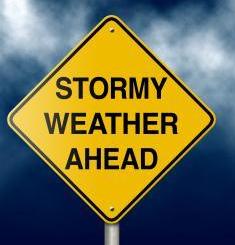 An increasing level of extreme weather poses growing risks to the financial stability of insurance companies, according to a new report.
An increasing level of extreme weather poses growing risks to the financial stability of insurance companies, according to a new report.
According to the nonprofit group Ceres, there are proactive approaches insurers, regulators and investors can take to address these risks.
The report “Stormy Future for U.S. Property and Casualty Insurers: The Growing Costs and Risks of Extreme Weather Events” illustrates how climate change is contributing to stronger, more frequent heat waves, drought and extreme precipitation events.
“The report makes clear that extreme weather losses are escalating and pose enormous challenges for U.S. insurers that they should pay far more attention to,” Mindy Lubber, Ceres president, said in a statement. “A small number of insurers have stepped to the plate in mobilizing a response to this global threat, but far broader engagement and action from the industry is needed.”
Insurance commissioners in Washington, California and New York already require major insurers to disclose their potential exposure and strategies for dealing with climate change risks. Such mandatory disclosure is among a dozen recommendations in the report for insurance companies, insurance regulators and investors.
“Insurance is the first line of defense against extreme weather losses, but climate change is a game-changer for the models that insurers have long relied on,” Washington State Insurance Commissioner Mike Kreidler said in a statement. “Companies will need to adapt if insurance is to remain available and affordable.”
This past summer’s devastating drought and record high temperatures are the latest reminders of the impact extreme weather events pose to U.S. property and casualty insurers.
Last year’s spate of extreme weather, including damaging floods, heat waves, hailstorms and tornadoes across much of the interior U.S., contributed to net underwriting losses of $34 billion and the most credit downgrades in a single year since 2005, the year Hurricane Katrina hit the Gulf Coast.
While 2012 private insured losses so far are lower, total economic losses due to extreme weather have been no less troubling this year. The drought alone is expected to cost insurers roughly $20 billion, with most of those costs being borne by the federal crop insurance program, but more than $5 billion will also be paid by private insurers.
While the insurance industry has begun to recognize the potential impacts of climate change and to evaluate its likely effects on their business, significant challenges remain. Some leading insurers and reinsurers are promoting new products and policies that will help reduce carbon pollution, which is driving climate change. Others are focused on building stronger resiliency to climate impacts, especially sea level rise, stronger storms and extreme precipitation events.
“Just as the insurance industry asserted leadership to minimize building fire and earthquake risks in the 20th century, the industry has a huge opportunity today to lead in tackling climate change risks,” Lubber said.
“Extreme weather events will grow in number and/or severity because of climate change,” Kerry Emanuel, a climate scientist at the Massachusetts Institute of Technology, said in a statement. “U.S. average temperatures have risen over the past 50 years, and this year alone there have been more than 25,000 new record highs set.”
Ceres’ analysis is based on a careful review of U.S. property/casualty insurance industry financial results as reported by A.M. Best Company earlier this year.
The report recommends that insurance companies do a better job evaluating and pricing changing weather risks in their underwriting. This means developing and using more robust research and new catastrophe models that better reflect the latest science on extreme weather. The report concludes that if insurance companies want to keep markets viable and affordable, they must exert more influence on where and how buildings and infrastructure are built in order to reduce vulnerability to growing weather extremes.
In the long term, the report says, the insurance industry should advocate for government policies that will accelerate cleaner energy while reducing carbon emissions.
State regulators have a role to play as well. Ceres recommends state insurance commissioners strengthen mandatory climate risk disclosure by expanding the number of states participating, and by clarifying disclosure expectations. State regulators should also build climate risk considerations into the financial oversight process.
Ceres recommends that investors and rating agencies encourage insurers to improve disclosure of climate change risks, opportunities and response strategies, in a manner consistent with disclosure mandates already in place in New York, Washington and California.












